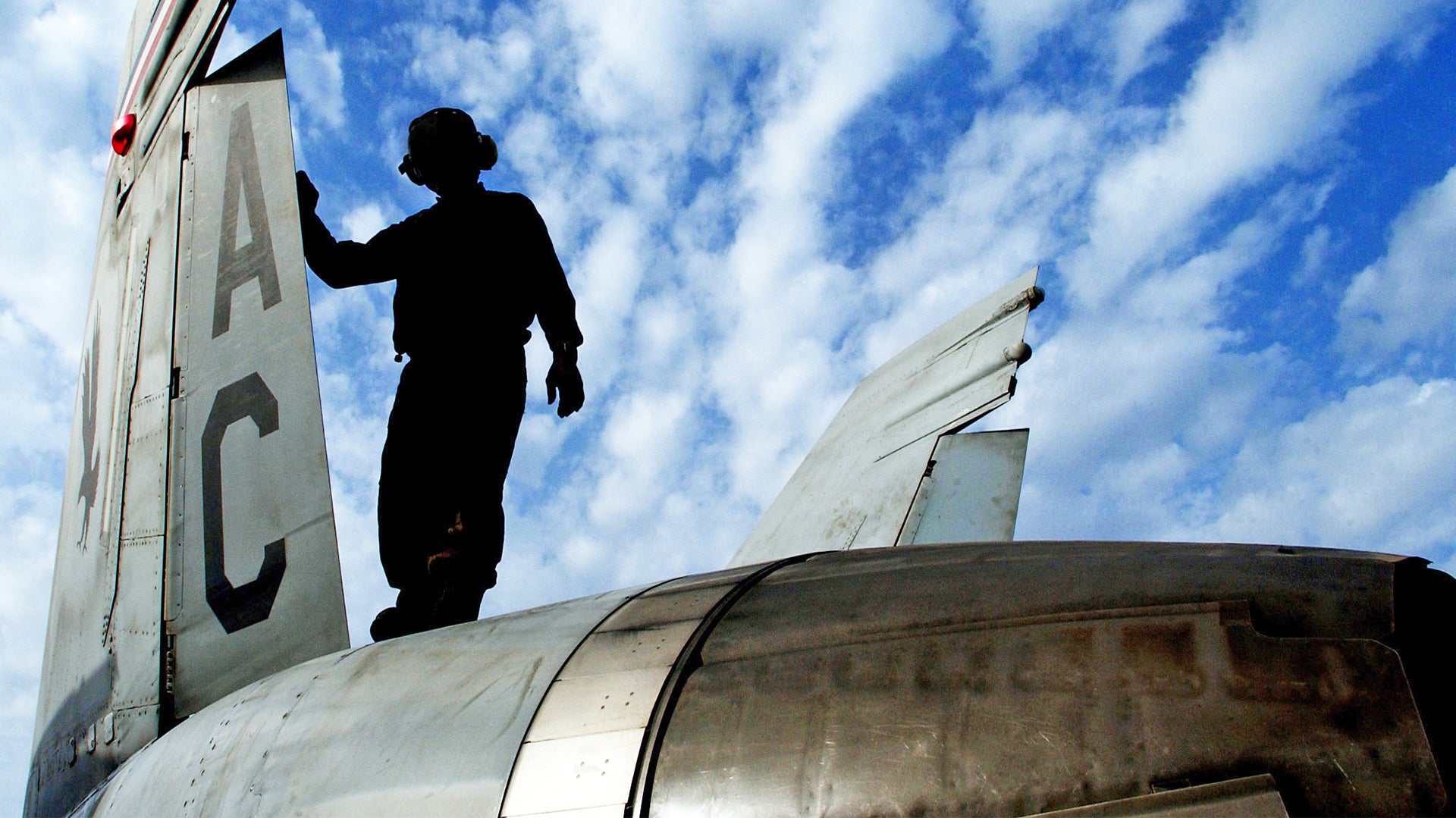We have heard so much lately about poor readiness across America’s air arms, but the USMC, in particular, has left some of its most essential aircraft communities in especially dire straits. The service’s worked over F/A-18 Hornet fleet is one of them. Over the last ten years, it has become all too common to see Marine tactical air squadrons with rows of planes sitting in pieces on the apron, their key components having been cannibalized to help healthier jets limp back into the air. Maintainers have even had to scrounge through the boneyard and even museums looking for impossible to find parts. And all of this negatively impacts a unit’s ability to stay current on critical skills, not to mention morale and personnel retention.
But through it all, some of the hardest working people anywhere have powered on and pulled endless metaphorical rabbits out of hats to keep their jets flying and their pilots as ready for combat as they possibly can. These are the maintenance people, the unsung heroes that may never even get to fly in the very jets that they spend countless hours and years of their lives servicing at home and in faraway lands.
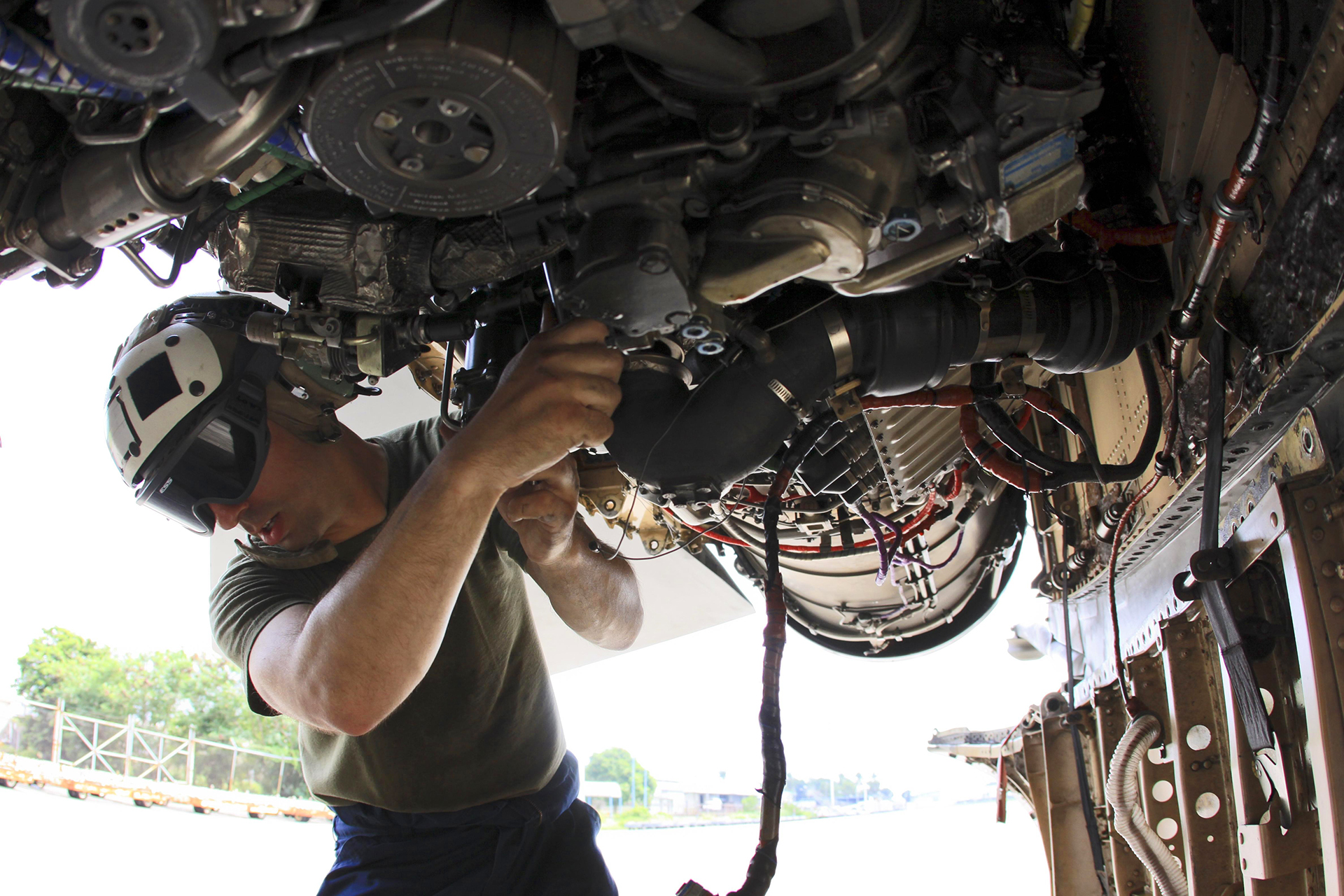
One of these talented Marines agreed to talk with The War Zone about their past experiences in the thick of the USMC’s aviation readiness meltdown, and about what it takes to keep beaten-down F/A-18 Hornets in the air. The Marine, who wanted no fanfare or congratulations for this article, requested to remain anonymous and gave a frank, honest and selfless account of his experiences. Quite frankly, his words are a testament to all of the ‘little guys’ who do the less glamorous but absolutely necessary jobs in America’s military machine. Like so many young enlisted personnel, he just wanted to serve his country, but he never thought he would end up tearing apart broken $30M strike fighters and putting them back together again as an occupation.
Keeping the USMC’s rickety Hornet fleet flying
From when I first started working on hornets to when I wrapped up my enlistment I saw the readiness and availability worsen and worsen. The F/A-18 is obviously an older platform so stuff would break with pretty decent frequency. The pilot would write up the discrepancy and we would begin to troubleshoot the issue. But a lot of times we would be hamstrung because there would only be one set of test equipment on the entire base that was needed and we would have to ask to borrow it from another squadron. If the other squadron needed it or was using it we were shit out of luck. There would be instances when we would be given a deadline to return the test equipment without even having fully completed the troubleshooting process because the unit we borrowed it from needed it back.
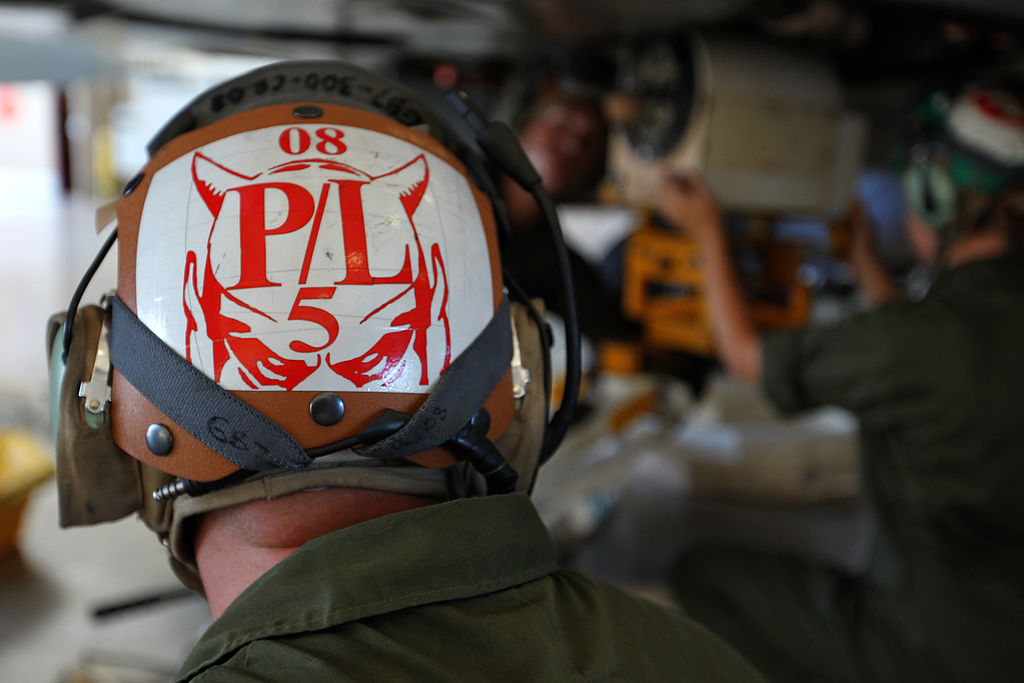
Getting parts was another nightmare. There were many times where we would order parts and they would take almost a week to get or we would get multiple defective parts. I remember in Guam we had an OBOGS (onboard oxygen generation system) generator go bad and turned in the part to be repaired by the MALS (Marine Aviation Logistics Squadron) unit supporting us. We got the same part back twice and it was still not functioning correctly. On the third try, it finally worked properly. Something like that should not be occurring.
I also remember a time where we had a rash of canopies delaminating and going bad but we weren’t able to get replacements in a timely fashion because there was only one available in the entire Marine Corps and it was all the way in Japan. So we cannibalized a canopy from one jet that was down waiting for parts to another jet. After the second jet was down we moved the canopy to a third jet. Our MMCO (Maintenance Materiel Control Officer) was constantly having to swing deals with base supply or other squadrons to get us the parts we needed.
Most maintenance shops keep extra consumable items on hand just in case we need them for something unexpected or if supply didn’t have any available, so we would have to barter consumables with other squadrons to get what we needed. At certain flight hour intervals we had inspections that required us to remove, inspect, and if acceptable re-install certain parts, but in order to do that we needed to replace certain consumables like o-rings, crush gaskets, etc., and everything we needed came in a kit that we had to order. On many occasions, the Marine Corps didn’t have enough kits on hand to adequately replace what was needed.

There were also shortages of certain explosives that we needed to replace due to their upcoming expiration dates. The ejection seat in the F/A-18 is made by Martin-Baker and there were more than a handful of times when we needed a part and there were zero in inventory so we would have to ask our on-site Martin-Baker engineer if he had extras on hand. Lucky for us he did every time. We also had a few ECS issues that required Boeing to send out technical representatives to assist us (and it took almost 2 weeks to solve the issue even with their help). So you can see what we were dealing with here.
These issues were Marine Corps-wide not just localized to VMFA-232. We were given chicken crap and expected to make chicken salad or turn water into wine. Some jobs can take a few minutes while others can take days. Most of the time we were able to meet our flight schedule but whenever we would ratchet up the flight schedule and conduct robust ops tempo that’s when jets would break left and right. When I first found out the Navy had Super Hornets and we were stuck with these old birds I was bit envious I’m not gonna lie. Even though I was just an E-3 I felt the Marine Corps was just being short-sighted and narrow-minded by blindly placing their faith in the readiness of the F-35.
Readying the Hornet for its next mission
It usually depends on the flight schedule, but the vast majority of the time there is a great urgency to get turnaround inspections on F/A-18s done. For egress specifically we inspect the canopy and the ejection seat for any damage or downing discrepancies, and if it’s an older jet that uses LOX (liquid oxygen) then we refill the LOX bottle.
Ordnance is usually running around loading new chaff and flare buckets in the jet or uploading/downloading munitions for the next event. The plane captains refuel the jets, service the oil, and inspect the aircraft overall to ensure its readiness to fly again. And avionics loads whatever necessary navigational data that the jet requires for its next event.
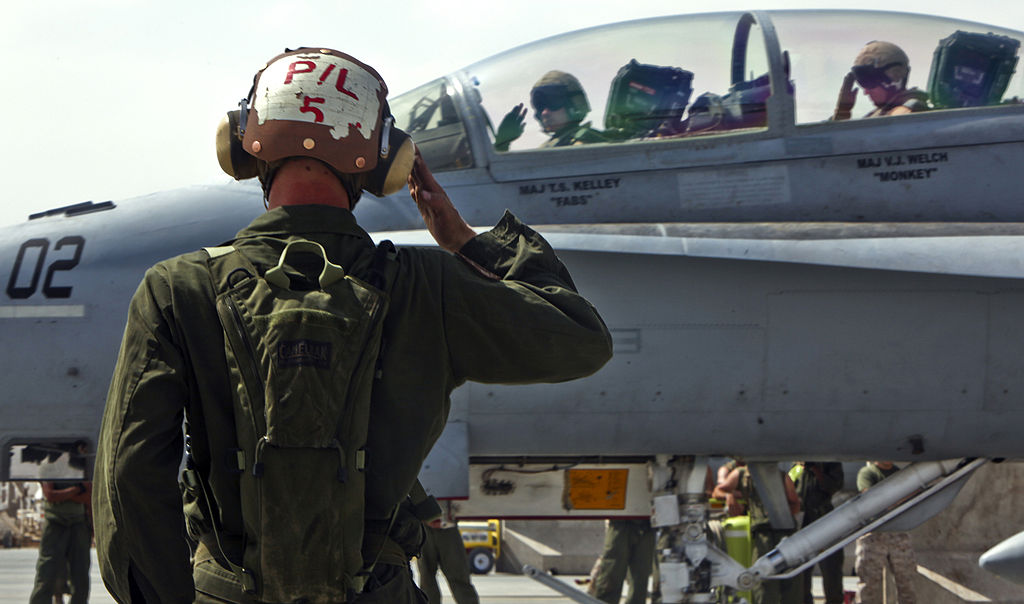
If we can swing it without downing the jet we try to troubleshoot any issues so that the aircraft can go from PMC (partially mission capable) to FMC (fully mission capable). Maintenance control is very hesitant to let us conduct maintenance on a jet that is in an up status for fear of us possibly downing the jet unless it is absolutely necessary and unavoidable.
The Hornet’s bugs
Unsurprisingly the ECS (environmental control system) presented the most problems on the F/A-18. It’s a very finicky and somewhat complicated system that seems to have a mind of its own. In my experience, it seemed that the ECS operated well in drier climates. Whereas in humid climates, like Guam or Key West, the humidity wreaked havoc on the ECS and gave our shop personnel many frustrating discrepancies to troubleshoot.
To be more specific, most of the symptoms that persisted overall were “low/no air flow” to the cockpit—warm weak air flowing to the cockpit instead of the usual cool air to keep the pilot comfortable— “av air hot”—avionics not getting the cool air required in order to keep them from overheating while being used during flight—”OBOGS degrade”—which meant either a component for the OBOGS system is failing/failed or the pilot is not receiving enough purified oxygen, which can also lead to a very dangerous physiological event for the pilot.
Last but certainly not least is the loss/fluctuation of cabin pressurization. This can be very elusive to successfully troubleshoot at times because the cabin pressure system may act up during flight by not scheduling properly (pressurize or depressurize at the proper time/altitude) and sometimes we could not duplicate the issue on the ground. This would lead us to swapping out parts until the issue stopped rearing its ugly head.
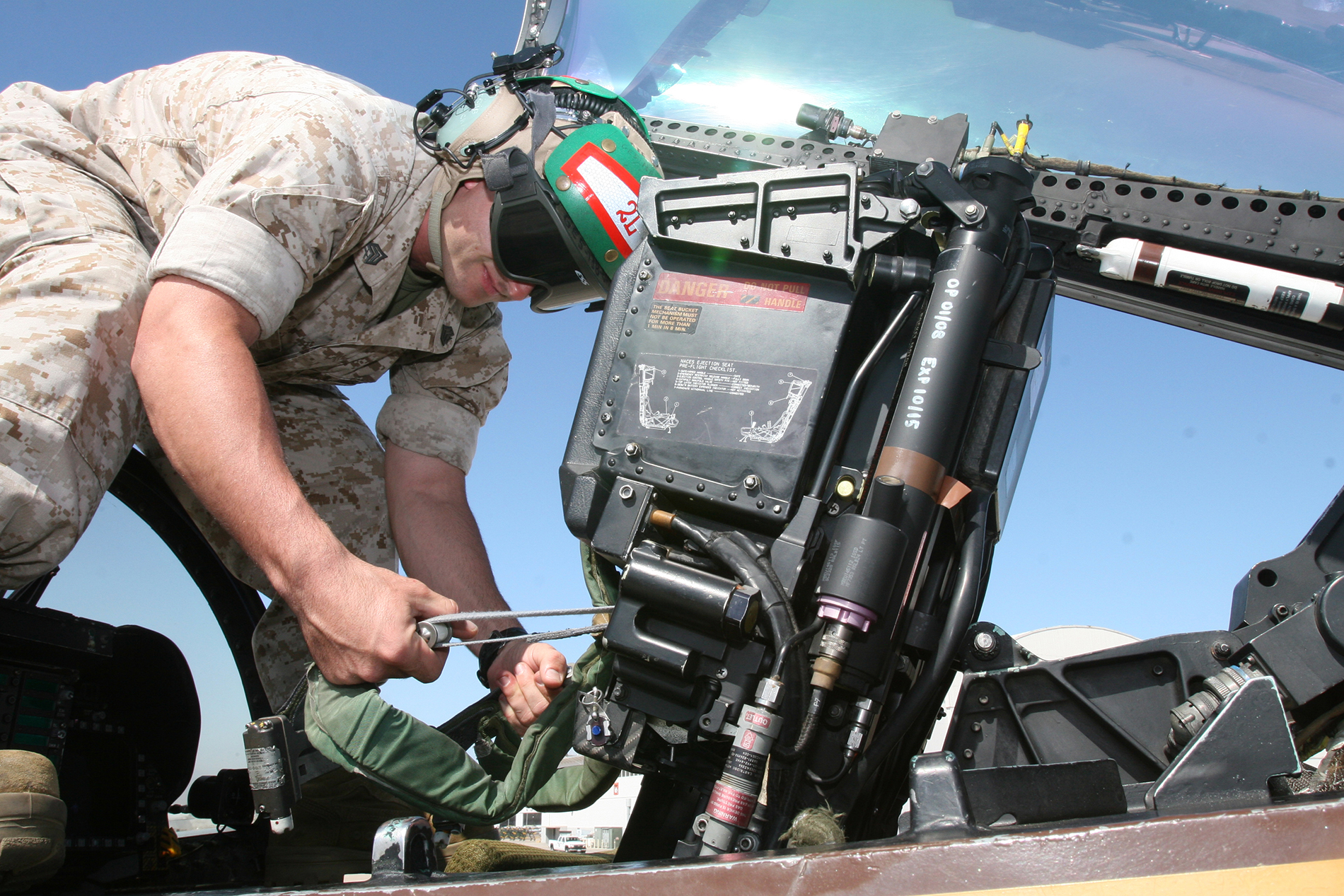
To be honest, there were many times when the pilot or pilots would write up ECS gripes that they experienced in flight and we simply couldn’t replicate the issue on the ground while doing our testing and troubleshooting. But thankfully we were able to rectify the issue more often than not. Sometimes the issues that persisted were the result of aircraft wiring being damaged or faulty and we would troubleshoot for hours, days, and sometimes weeks all because our electricians were reluctant to admit it was their wiring that was creating issues.
It still irks me how many man hours and parts were wasted on the reluctance of our electricians to admit it was their system that needed troubleshooting, but I also cannot go without saying that there were plenty of instances where they did give us assistance as well. It was a love-hate relationship…..mostly hate (haha). I can’t say that there is a way to “fix” these persistent issues. To me, the problem is that these jets are just too worn out and old that it’s more like plugging 11 leaks with ten fingers. There was also a strange and baffling phenomenon that would occur, we would fix a jet and it would come back from a flight with no issues. Then after not flying for 24, 36, or 48 hours, it would have some sort of issue after starting up and getting ready to go out for a flight. Somehow the jet would just break while sitting on the flight line while not even being operated.
Getting the show on the road
In order to get our jets ready for deployment, the MAG (Marine Air Group) focuses their support on us to give priority over other F/A-18 squadrons on base. Anything from parts, testing equipment, ground support equipment, or, if a shop is lacking enough experienced maintainers or an unforeseen event prevents a Marine from deploying at the last minute, even personnel are pumped into the squadron. There is a lot of pressure on us as mechanics to get our jets all ready to go for the trans-pacific flight, but every single time we deployed we were able to get all of our aircraft ready and out the door when they were supposed to.
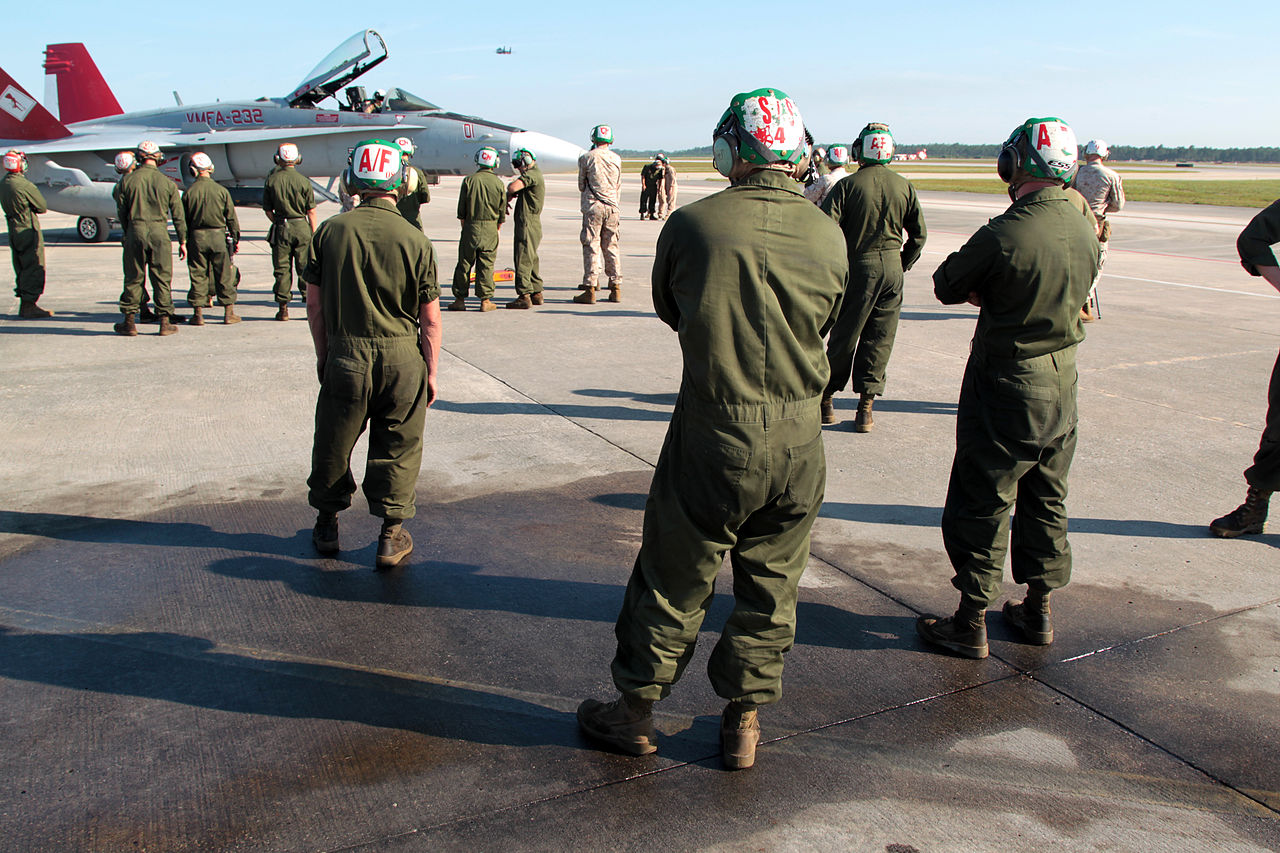
When our birds would embark on their journey there would be two small groups of maintainers that facilitate the trip. One group would be “lead” and go ahead of the aircraft while the other group would be “trail” and they would follow behind the aircraft. Both groups of maintainers would usually fly in KC-130s (but I believe there was an instance of a C-17 being used as well) with a spare engine, tools, test equipment, and sometimes spare parts.
The job of lead was to land ahead of the jets as they hopped from location to location and recover them. If there were any downing discrepancies that required maintenance “lead” would try to troubleshoot and identify the problem, but they were usually not able to fix it because they had to keep pace with the flyable aircraft. The job of “trail” was to pick up where “lead” left off and fix any of the issues.
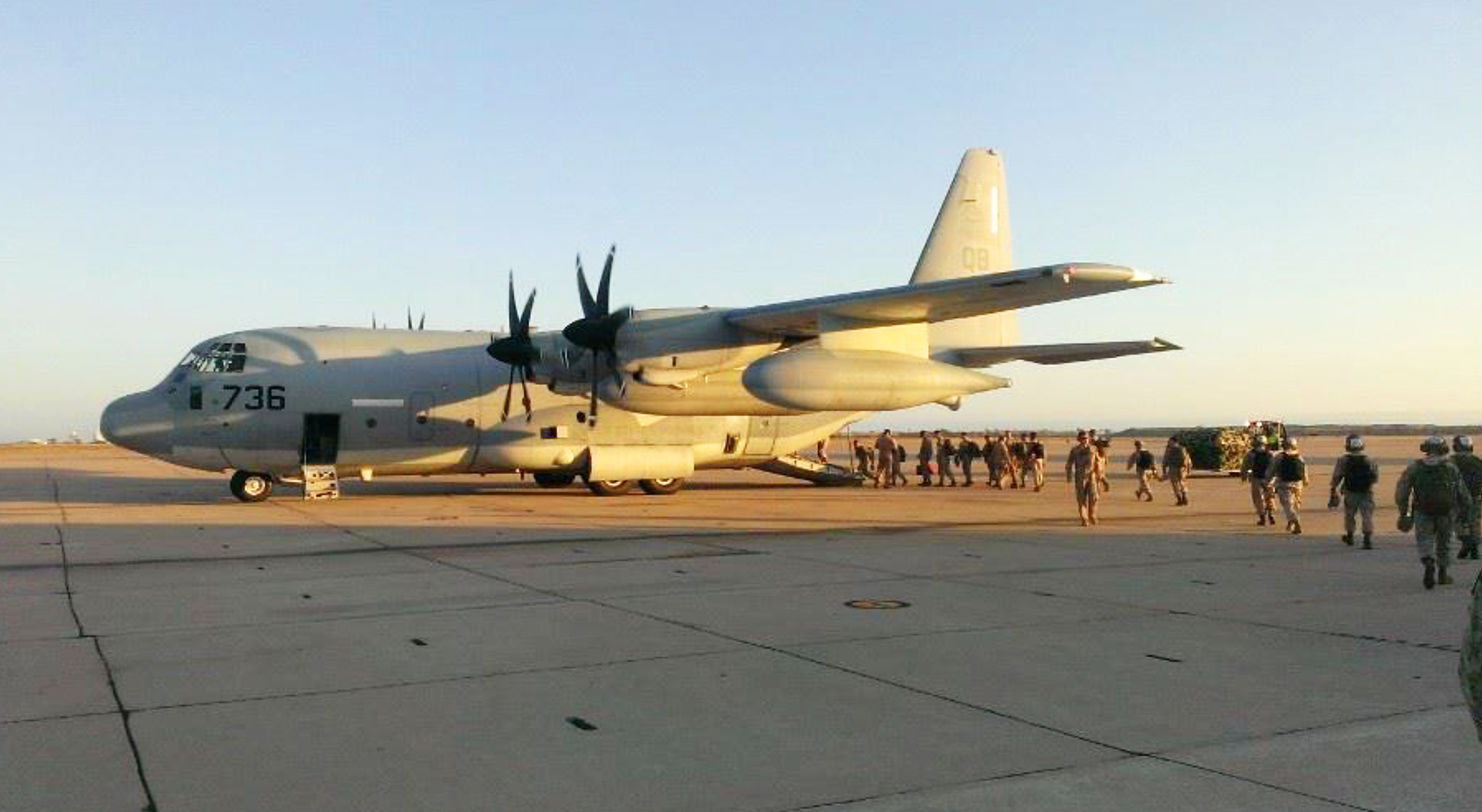
If the maintainers are lacking in the necessary items to fix whatever the issue was, a KC-130 is sent to that location with whatever was needed. The U.S. Air Force always provided tanker support to gas up our birds in flight as well. So as you can see there’s quite a bit of support that goes in getting an F/A-18 squadron across the pond.
Traveling with the flying circus
Going on the road is a juxtaposition of working hard to support a robust flight schedule and having fun. It’s always exciting for me to get to see new locations or different bases. Going to RAAF Tindal especially comes to mind. Our assigned living area was in these underground cold war era bunkers that had these huge thick blast doors at the entrance. While there, I was able to drive with some friends from other shops in VMFA-232 to Nitmiluk National Park, Australia and hike to Katherine Gorge, then go swimming in Edith Falls. That was quite an adventure to be able to experience the beautiful geography.
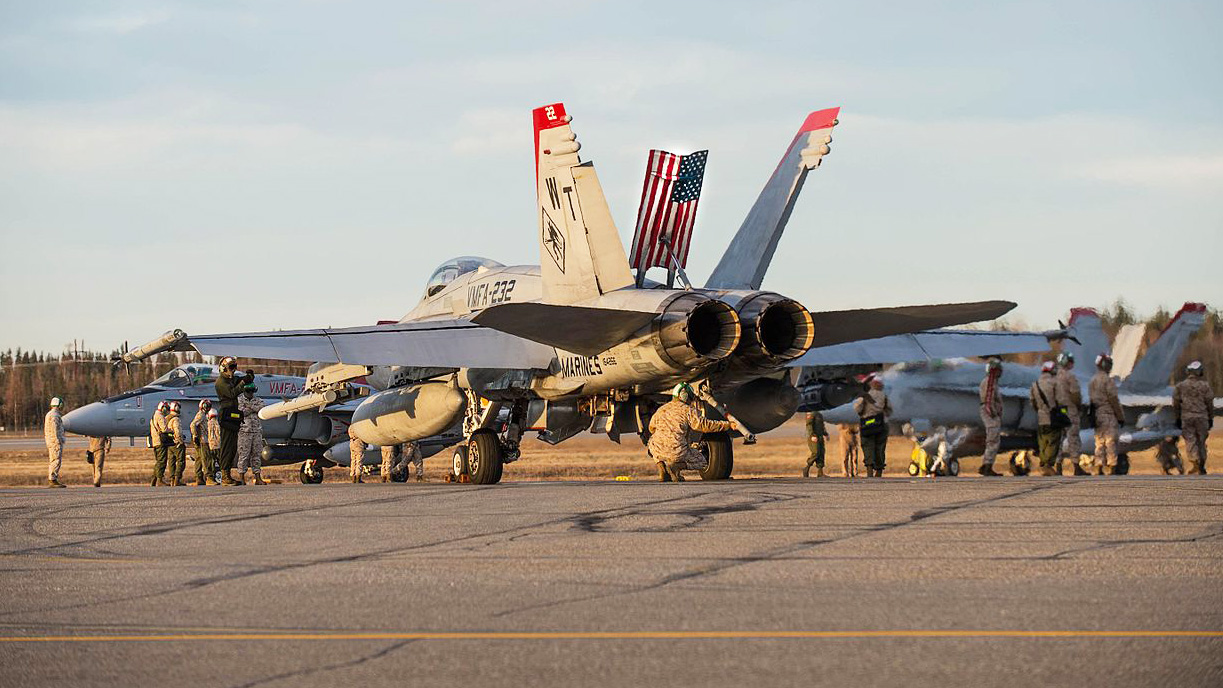
It was also really cool to interact with the RAAF and see how they operate. They have an awesome chow hall at RAAF Tindal (I was a little jealous to be honest). Another awesome place we were fortunate to go to (twice actually) is beautiful Key West Florida. Our squadron was sent to NAS Key West for some training with VFC-111, so naturally, we took advantage of the opportunity.
While there our squadron enjoyed the good food (gotta have key lime pie in Key West!), had some drinks, and almost everyone went fishing. My shop and I were able to go saltwater fishing on one of our free weekends. The fishing trip didn’t turn out the way we expected. Half of the group got sick—myself included—and the rest that were able to continue fishing weren’t able to catch anything worth keeping. But despite all that I don’t regret it.
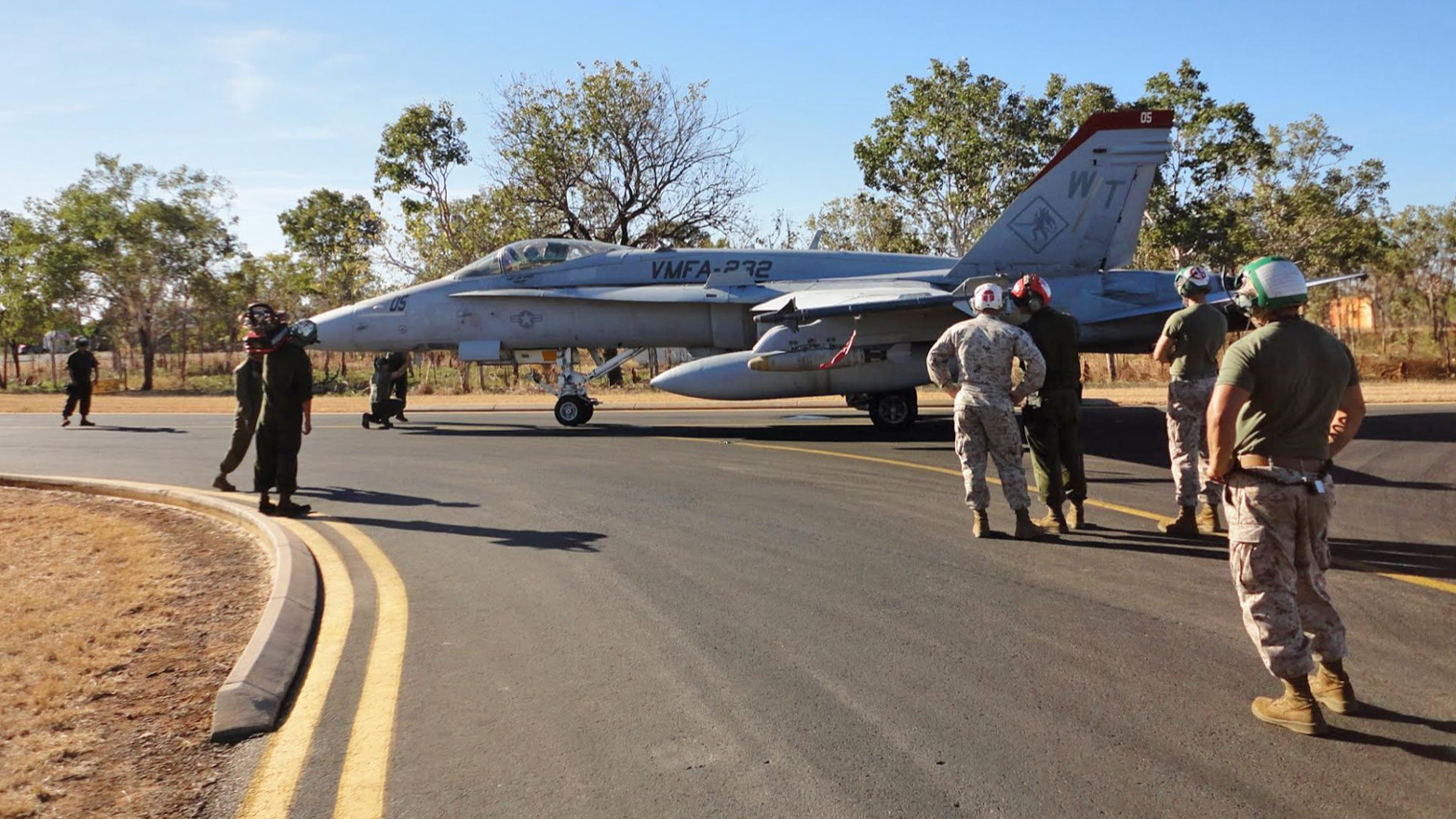
While we do get to have fun there is a lot work that is involved. We usually work 12 hour shifts and due to the ops tempo there is a large maintenance load because our old birds have a hard time keeping up. Especially if the climate is humid like it is in Florida, then the ECS tends to act up and the means more work than usual for us as egress mechanics.
Heading to Fallon for Topgun
First off I hate to disappoint, but there were no Maverick, Ice-Man, Jester, or Viper sightings. And sadly there weren’t any towers being “buzzed.” At first it was a little hectic adapting to the ops tempo and basically trying to form a cohesive group of maintainers from multiple navy squadrons, but we were all able to assimilate and get the hang of things rather nicely after the first few days or so.
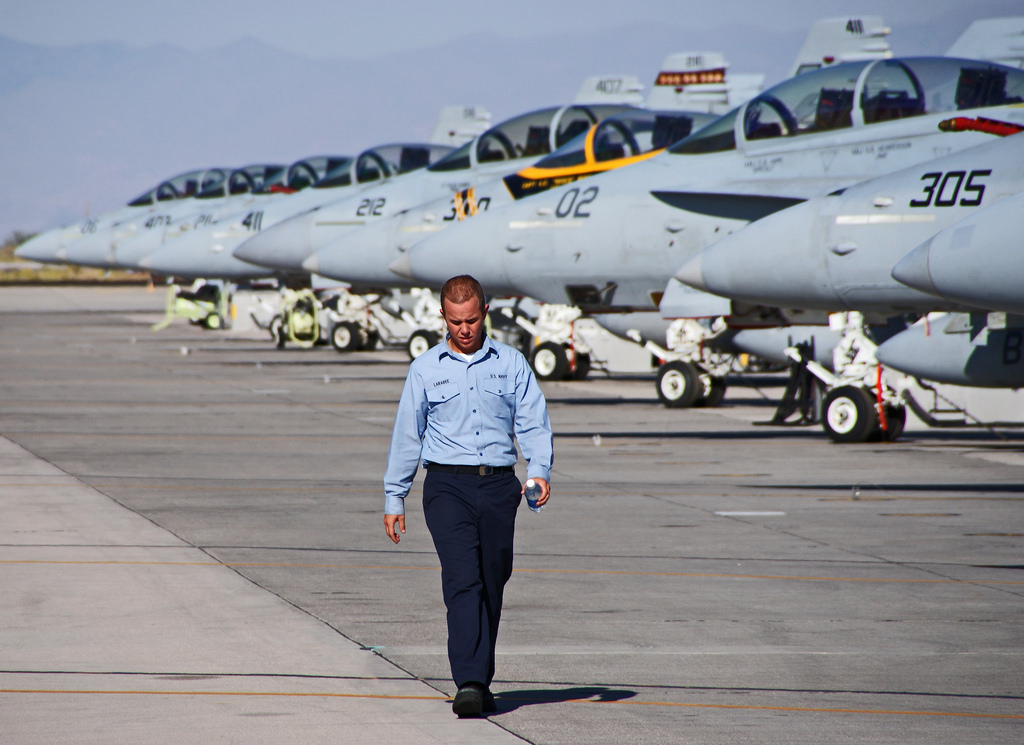
It was awesome to see the enormous effort and support that goes into a Topgun class. I never would’ve even guessed the amount of personnel, equipment, or aircraft that went into it would be that enormous. The Topgun class was comprised of legacy and Super Hornets and surprisingly the Red Devil’s F/A-18Cs held up pretty well as far as being in an up status throughout the three-month-long event. It was also very interesting to see famed VFC-13 and its diverse aircraft with their awesome paint jobs up close and personal. Two different Air Force units showed up with F-16s and F-22s to “fight” against the class for certain portions of training as well.
The UMSC’s aircraft maintenance woes as a whole
I haven’t ever really spoke with the helo guys (Navy or Marine) about how their situation was as far as maintenance ops and demand so I can’t really give an answer to that. But as far as the Harrier and Prowler guys went, it seemed that their situations were more dire than ours. They had a much harder time keeping their aircraft in an FMC or even PMC status than we did.
At MCAS Iwakuni we were in a hangar next door to a Harrier and a Prowler squadron and they always had most of their aircraft down for maintenance. They seemed to have had the same difficulty getting parts through the supply system in a timely manner that we did. Because of the enormous workload, both units where 12 on 12 off the whole time they were there next to us. I seem to recall one those squadrons working Christmas Eve as all. No matter what the situation, someone always has it worse.
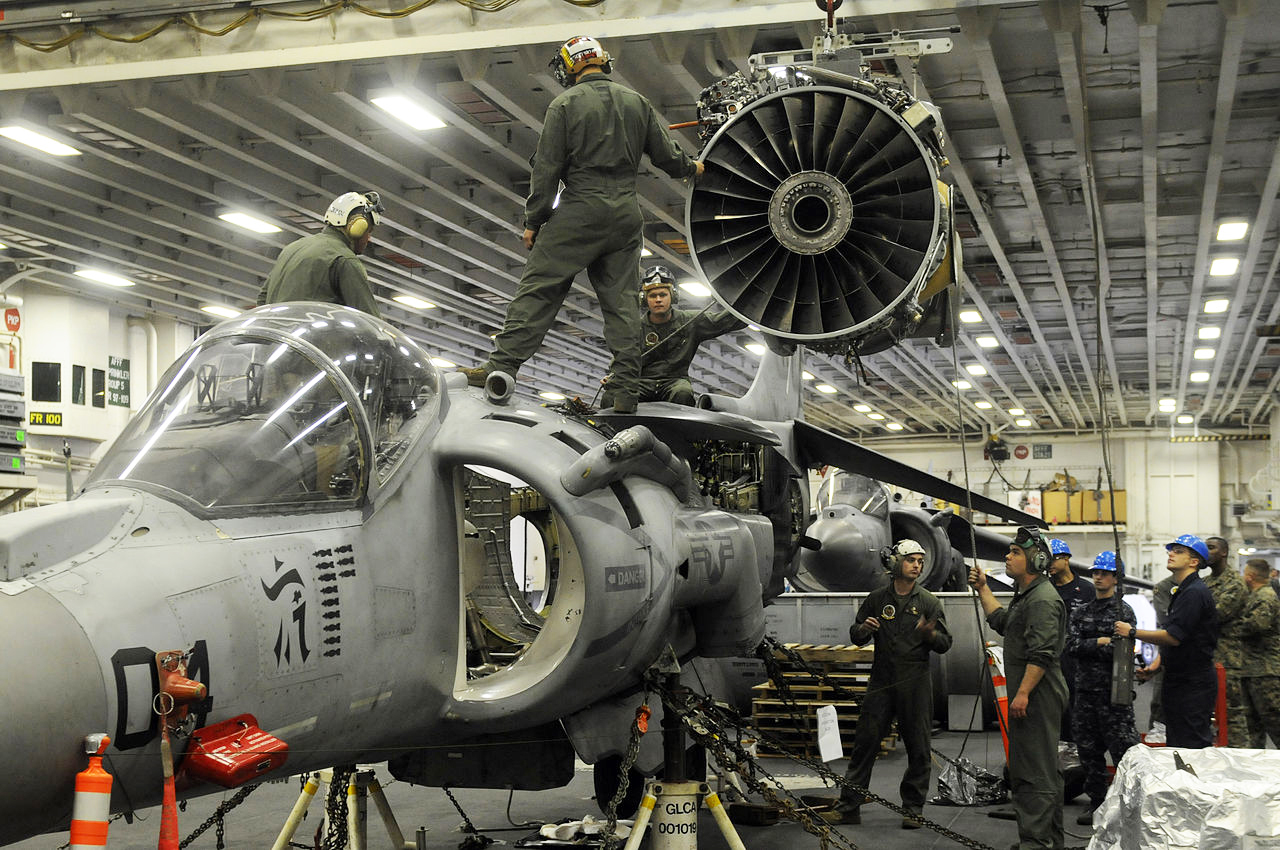
The new plan to infuse Navy Hornets into the USMC’s inventory
Even though the legacy F/A-18 is a pain to work on I still think the platform is pretty awesome. It saddens me to see the state of decay that the Marine Hornet fleet has fallen into. Not only is it sad but it’s also detrimental to our nations security and ability to respond and counter threats. This danger also extends to the pilots that fly them. How can Marine aviators do their job with a clear focus and sound mind if they have something like worrying about the quality of their aircraft in the back of their mind? Their job has enough risks and hazards without it compounded by the poor state of the platform they are flying.
The infusion of the Navy’s legacy Hornets is something that is sorely needed and will be a greatly welcomed addition. Anything that can help alleviate the horrendous and unacceptable readiness rates will be greatly welcomed resource I’m sure. But this is also a too little too late, band-aid solution to an obviously much larger issue. The damage is already done to the Marine Air Wings and I really don’t think this will stem the tide until the final retirement of the legacy F/A-18s probably in the 2030s.

I know it’s easy to Monday morning quarterback the poor decision making of the Marine brass but the fact of the matter is that they failed the Marine Corps and should’ve procured Super Hornets to provide a bridge of transition to the F-35. Had they chose to do so the infrastructure was/is there via the U.S. Navy to provide support for any needs that would arise including training and logistics.
The Hornet’s spate of critical onboard oxygen generation system woes
Like many others, I myself am rather perplexed as to the root cause of these dangerous events. The ECS (environmental control system) has redundancies that are supposed to prevent these dangerous re-occurring episodes. Speaking from personal experience I do know that if the aircraft’s electrical system is faulty or begins to operate incorrectly, all of the many sensors, valves, and components that rely on electrical signals or voltage could be impacted, and if that process is compromised then the ECS will act faulty, even if the components that make up the system are not failing.
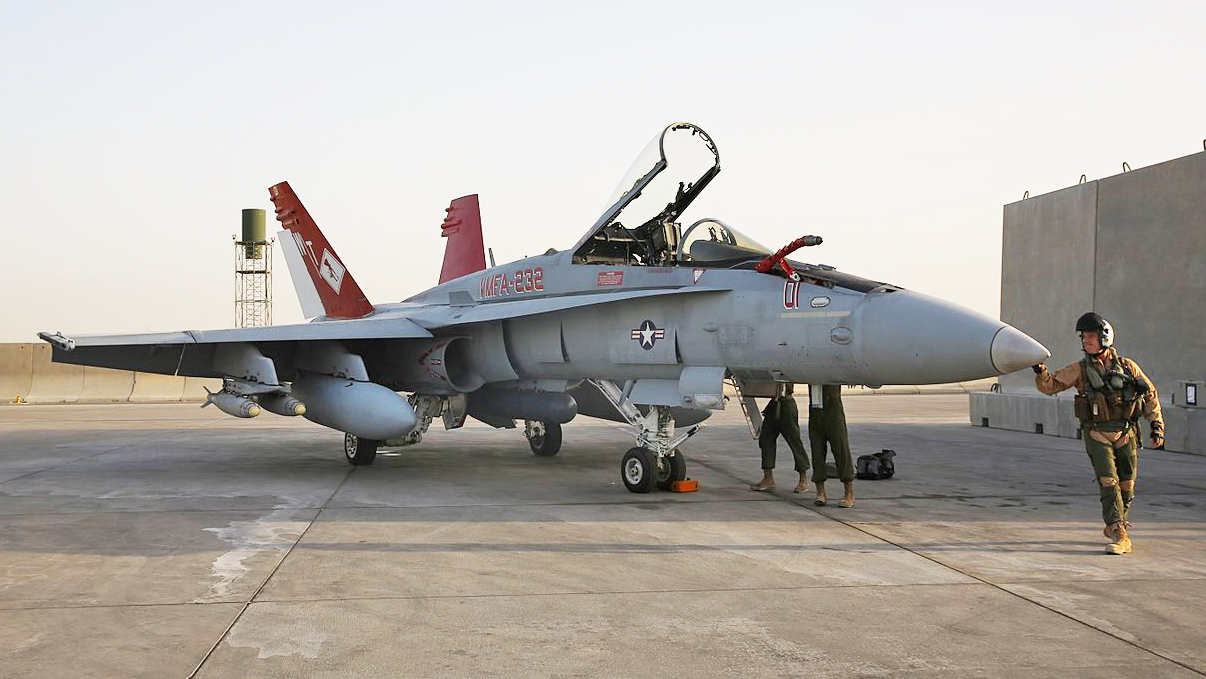
A compromised or faulty electrical system can also burn out and cause the ECS components to fail, therefore exacerbating the issue. The root of the problem may also stem from manufacturing defects or even from the suppliers that sell parts to the assembling manufacturer. I hope that the comprehensive review and investigation being conducted can produce a permanent solution to this dangerous and persistent problem.
A call to serve with the USMC
Ever since I was a young boy, about five or six years old, I was always fascinated with all things military and aircraft related. That coupled with the fact that I loved to read led me to crack open any book I could get my hands on regarding those topics. The things that consistently stood out to me were the tenacity, determination, and toughness of the Marine Corps throughout our nation’s history (I am not in any shape or form trying to minimize the other key contributions of the other branches).
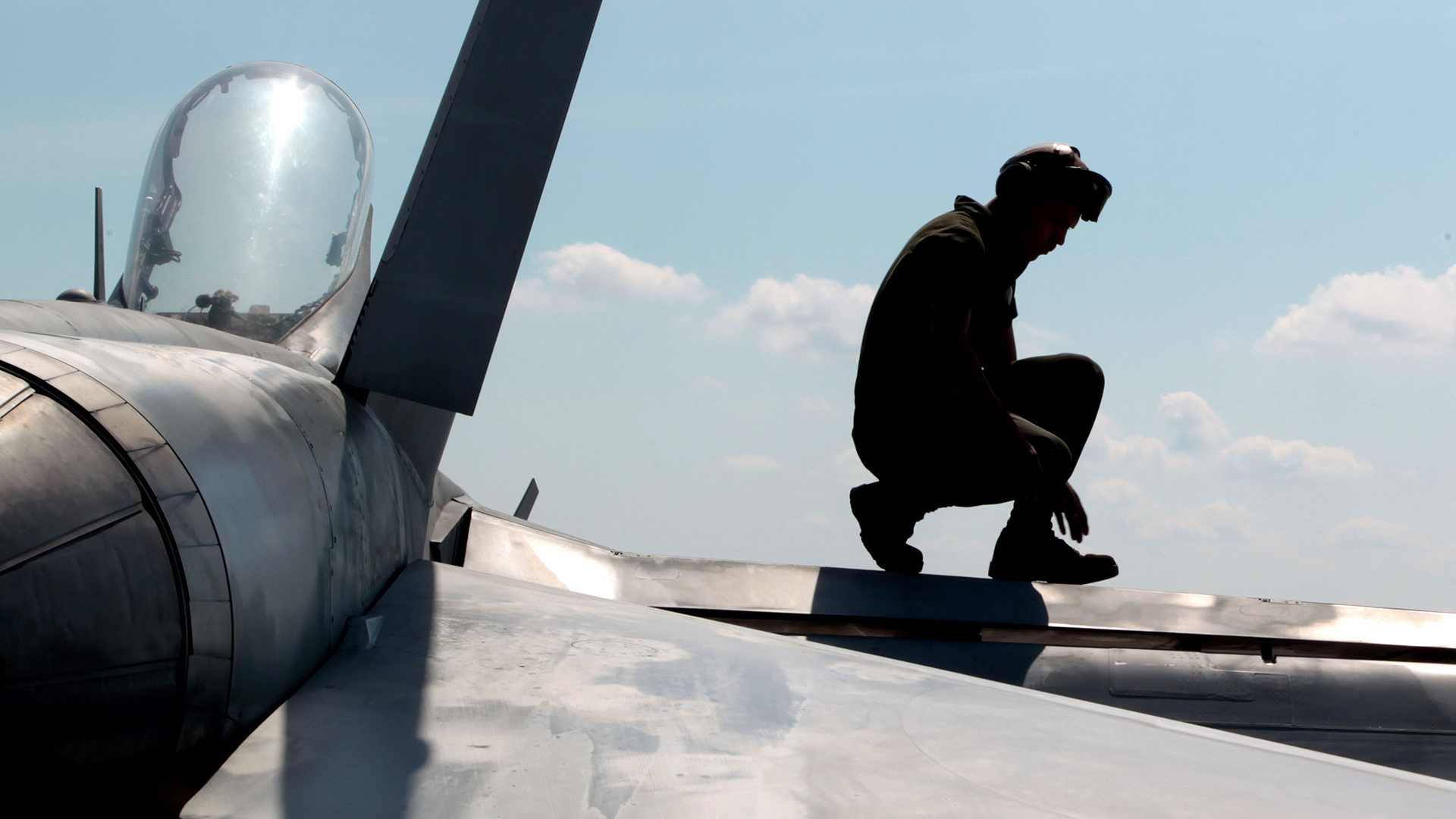
I also grew up having many family friends that were Marine veterans and they gave me plenty of insight into the traditions and high demands that are required of Marines. After hearing all their stories of the pros and cons of enlisting in the Marine Corps it solidified my determination that I wanted to be a part of that family. I wanted to enlist as early as possible so I spoke to a Marine recruiter and found out the earliest I could do that was 17 years old with the signature of a consenting parent. Despite being extremely apprehensive about me enlisting at an early age my mother agreed and as soon I turned 17 off to the recruiting office we went. A few months after graduating high school I shipped off to Marine Corps Recruit Depot San Diego at 18 years old.
The winding road to the flight line
After completing boot camp (13 weeks long) and Marine Combat Training (four weeks long) I was sent to NAS Pensacola, Home to NATTC which is a giant hub for naval aviation training, to begin training as an Air Traffic Controller. Before class on Monday, Wednesday, and Friday every MOS (military occupational specialty) had PT in the morning which always involved a lot of running and a lot of pull-ups. After PT we would go to the chow hall to eat rather quickly. After breakfast each MOS lines up in separate formations outside the barracks (except for ATC we lined up outside the chow hall), the platoon leaders of each MOS take accountability after a few minutes of standing by in order to ensure no one is UA (unauthorized absence), and then marches to class.
Most of the MOS classes are held in classrooms inside this large two-story building called “The Mega Building” which is close to the chow hall, but the ATC school building was the furthest away from the chow hall at about a quarter of a mile. At about roughly a third of the way through the ATC course I failed my third test and washed out. That course is pretty rigorous and the attrition rate is high. Before our first test we had a class of 14 after the first test we had six.
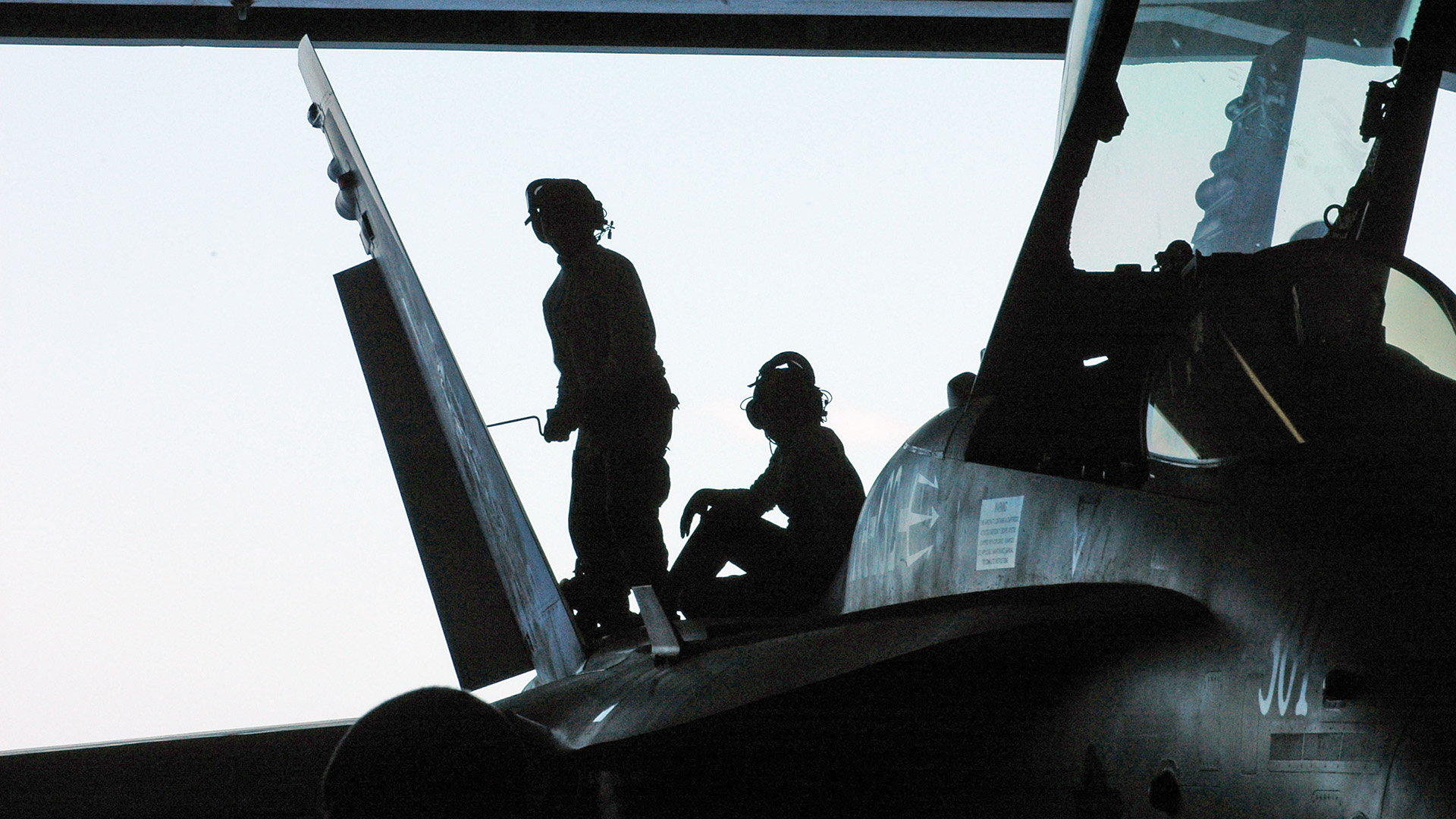
Being faced with failing air traffic control school was quite a gut punch to say the east, but instead of feeling sorry for myself I decided to take it in stride and have a positive attitude instead of negative one. Due to the needs of the Marine Corps, I was re-classified as an egress mechanic, and I had no say in the selection of my newly assigned MOS.
The egress course is broken up in to “A” and “C’ schools. “A” school is about two months long. My instructors did a great job conveying and communicating the course material in order for me to thoroughly understand it. “A” school is an introductory course to the general theory of operations for the ECS, emergency escape systems, proper safety and precautions regarding aircraft maintenance, explosive handling, corrosion control, how to navigate/utilize technical publications and proper use of ground support equipment such as an A/M26U-4 (NAN) nitrogen servicing cart, which we use for testing certain components on the ejection seat, and a TMU-27/M LOX servicing cart which is used to fill/refill the LOX bottle located in the aircraft.
Prior to this training, I had zero experience doing anything mechanical so to me this we quite a shock to my system having to learn all these various types of tools and equipment. Early on I had a hard time adjusting but after taking some lumps I began to get the hang of it. After being lectured on each topic we would be tested through a written exam and then had to complete the maintenance tasks we were lectured on without the instructors’ assistance. It wasn’t pretty but I passed all my tests.
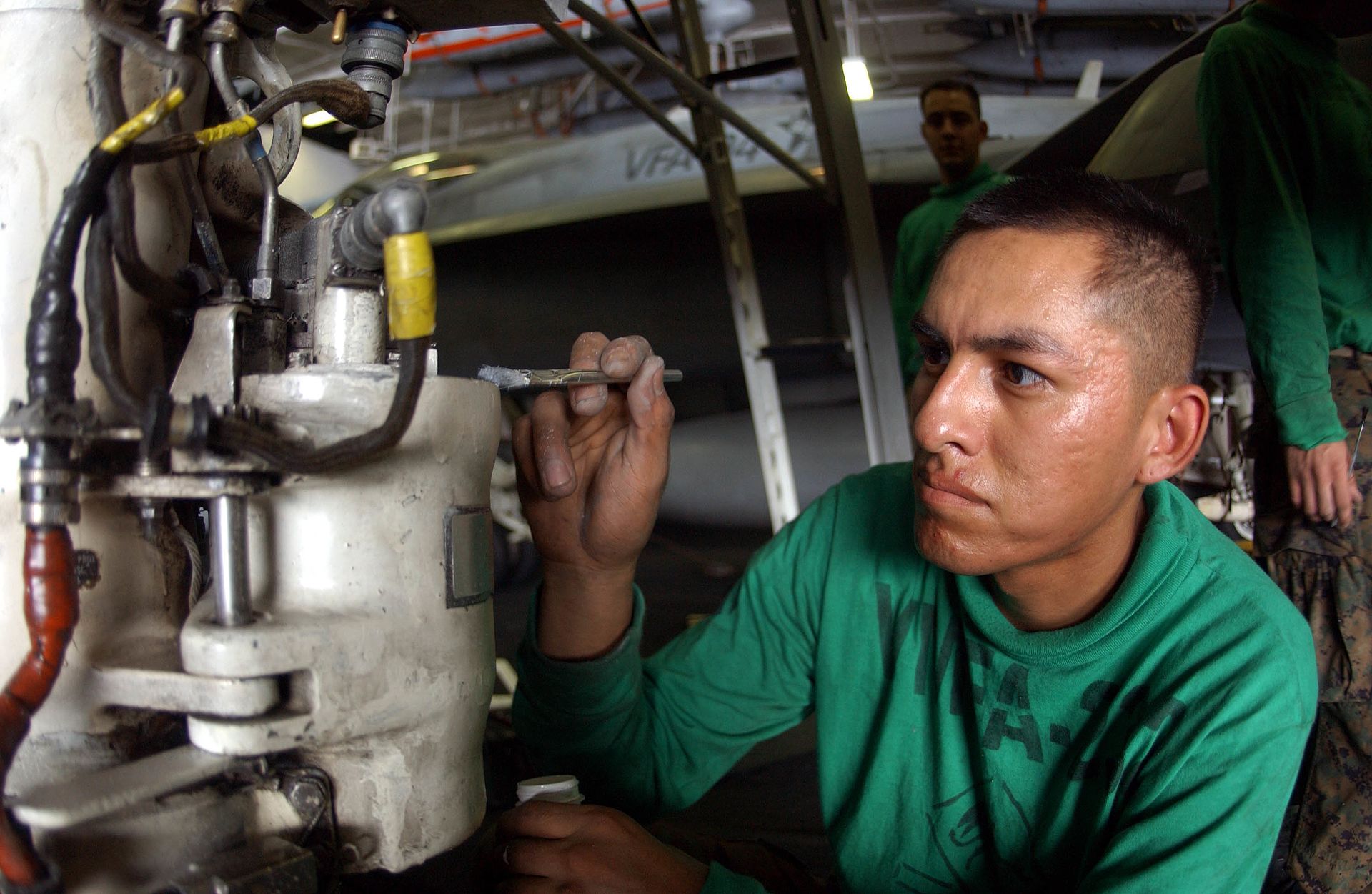
Upon graduation from “A” school, I received my orders and headed to “C” school at NAS Oceana in Virginia to be trained on the F/A-18C platform. I didn’t get to pick my platform or where I went to “C” school, I just had to go where the needs of the Marine Corps required me to. “C” School is four weeks long and there I learned about the ECS, egress systems, and technical publications specific to the F/A-18C.
Becoming a ‘Red Devil’ of Marine Fighter Attack Squadron 232
A short time before graduating “C” school I was given three choices of where I prefer to get stationed: east coast, west coast, or overseas. And we have to list them from most desired to least desired. Most of the time the Marine Corps doesn’t care where you want to go they just send you where you’re needed. I would say that MCAS Miramar is the most desirable location based off the proximity to San Diego and the beautiful weather. As far as each individual unit’s reputation goes, I was fortunate enough to get my location of preference on the west coast and be assigned to VMFA-232 Red Devils based out of MCAS Miramar.
Checking into a new squadron was a little overwhelming at first. I was assisted by NCOs (non-commissioned officers) with the whole checking in process and they made sure I was able to get all the things I needed to get done in order to process into a Marine squadron. After finishing up checking in, which takes about two to four weeks, I was placed on night crew.
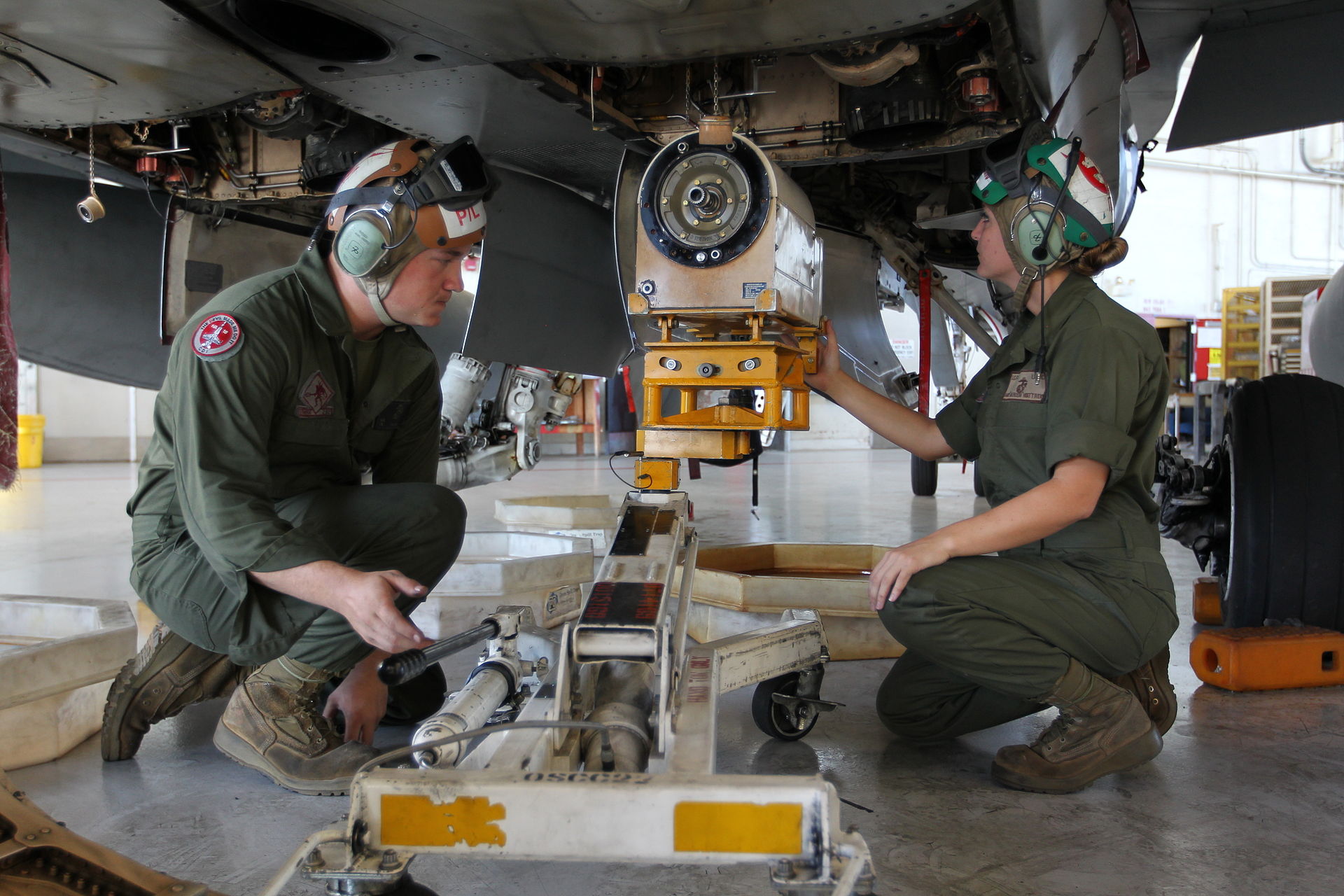
Night crew is where most of the maintenance gets done because there is usually little to no flying unless there is a scheduled exercise or event. So for a brand new maintainer it’s the perfect training environment. Being on nights is not very fun, a work day is usually 13 plus hours long, a lot more work is expected out of night shift, and if you live in the barracks like I did your sleep is constantly interrupted by fixed wing and rotary aircraft all day.
NCOs in the shop are responsible for training junior Marines so I shadowed my NCOs and basically became a sponge for learning as much as could about my job. This included how to communicate with other shops, communicate what was going on to maintenance control, and even how to brief the officers on what was going on that pertained to our shop at the maintenance meetings each day.
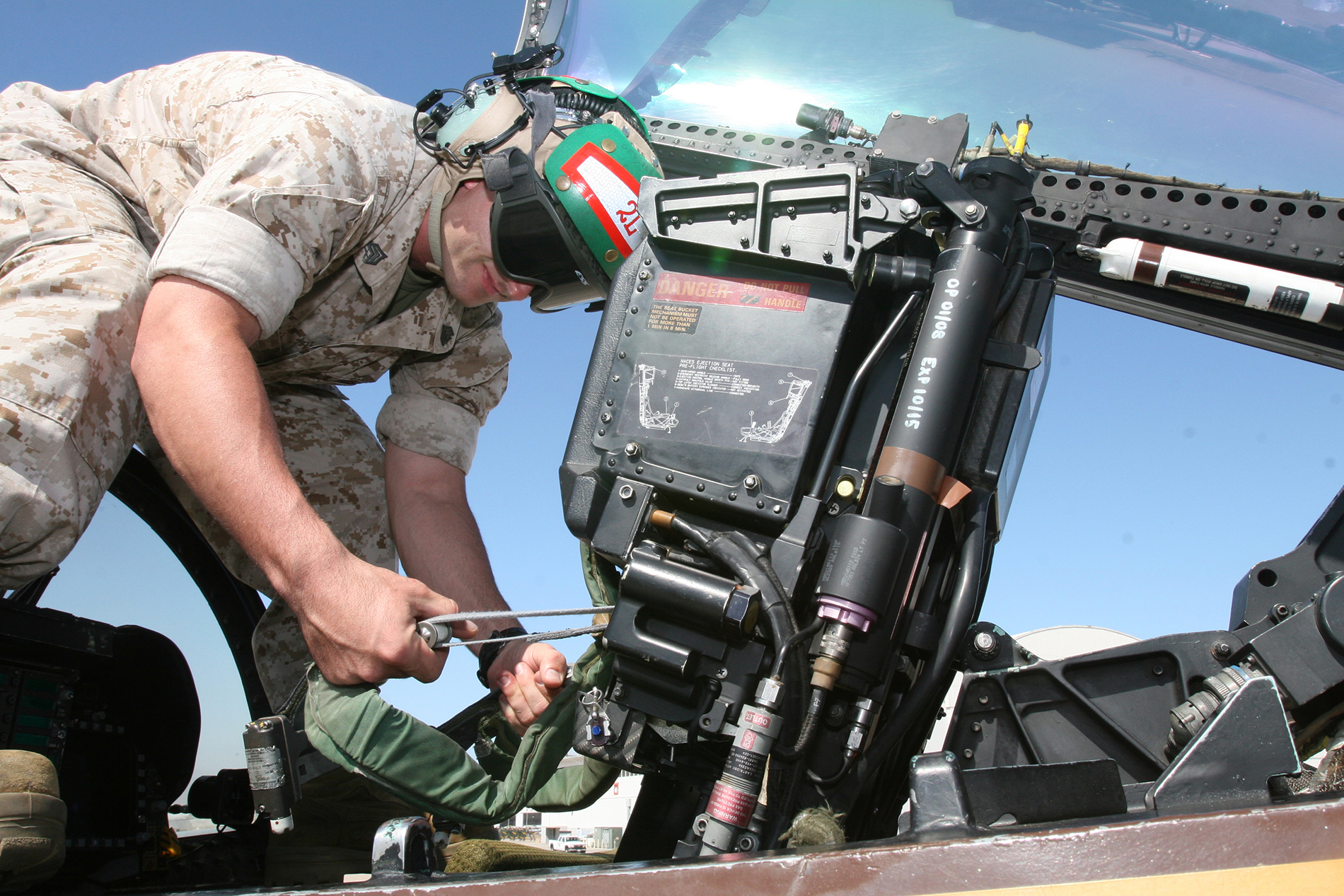
I also had to learn how to play politics and navigate many different egos throughout the maintenance department in order to get things done. When it comes to teamwork, certain shops were easier to work and communicate with than others and that played a role in how quickly or slowly certain things got accomplished. But overall it is a rather stressful and interesting dynamic that one has to navigate on a daily basis.
Going from Red Devils to Black Knights
Checking out of one unit and into a new one was pretty easy for me as far as the official Marine Corps process because I was literally going across the hangar to VMFA-314, but the difficult part was leaving my friends behind. Thankfully 314 was very warm in their welcoming me to the squadron.
VMFA-232 was deploying to the Middle East very soon and I was going to separate in a few months so I had to leave. As far as squadron culture goes I would say there is quite a difference between the two units. At VMFA-232 there was more pride in our squadron’s rich history and reputation. Our leadership constantly reminded us that we were the Marine Corps first, oldest, and most highly decorated fighter squadron so we were held to higher standard than other units on the flight line. But all that came at a cost. The camaraderie wasn’t as strong at 232 as it was at 314.

People seemed to get along better with each other and watch each other’s backs at 314. While there wasn’t a huge emphasis on history at 314, there was more teamwork that was evident. There wasn’t any animosity between shops like there was at 232. There was also a period of very poor leadership at 232 that revealed certain so-called “leadership” was more concerned about career advancement instead of being concerned about being a leader and although I had a brief stint at 314 I never encountered that there.
Losing a superior and a friend
Many pilots act like primadonnas, Major Sareen was not like that at all. Major Taj Sareen was the embodiment of a true hero and selfless leader. Even to the very end, he put others above himself.
My first time meeting him was when we had duty together and to my surprise, he knew who I was and which shop I was in—which to put it in context, showed me the type of person he was. To know anything about me, some lowly Lance Corporal who just checked-in to the unit, really meant something. Most officers, to be honest, didn’t really care about any E-3s.
Later in the day while on duty together we were talking and he asked me if I liked fast cars. Of course I did, I was a 19-year-old guy, so I said yes. To my shock, he offered to let me take his Ferrari for a spin! I told him I appreciated the offer but I respectfully declined—to this day I regret not taking him up on the offer.
To my knowledge, before the crash, he was encountering issues with the inertial navigation system (INS) and that paired with low clouds/overcast conditions led to his awareness being compromised as far as what the aircraft was actually doing. To put into context the piloting skills that Major Sareen possessed were was nothing short of exceptional. He was a Hornet instructor and logged over 1,500 hours flying in F/A-18s.
No matter how busy Major Sareen was he always took time to talk to everyone and was always genuine. He didn’t care what rank you were, what shop you worked in, even if you were junior enlisted he treated you with respect and dignity. He was a rare officer and it was an extreme honor and privilege to know him.
Contact the editor: Tyler@thedrive.com
